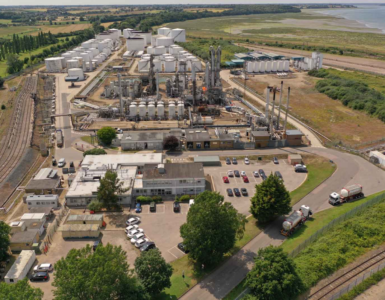COP27 – Round table on “investing in the future of energy: green hydrogen”.
The incoming presidency of COP27 has identified implementation as the main focus of COP27 aiming at addressing climate related transition and transformation through a holistic approach that takes into consideration different aspects including the social and economic development dimension, enablers for a just transition, ambition in action and support to allow for an on time and at scale substantial progress in all aspects of climate change, with ambition on mitigation action as envisaged by science, a transformative adaptation agenda that responds to the current and future impacts of climate change and appropriate finance and technology transfer to allow for an inclusive and principle based transition with no one left behind.
Following this narrative, energy has been a main focus in the transition process, with an evolving and advancing research and development in energy and clean energies.
Hydrogen has been identified as the potential energy source for the future, with an increasing focus from all stakeholders on Hydrogen, in particular Green Hydrogen, several countries launched their won Hydrogen strategies, while others are still formulating their own.
🔥 What about we co-host a webinar? Let's educate, captivate, and convert the hydrogen economy!
Hydrogen Central is the global go-to online magazine for the hydrogen economy, we can help you host impactful webinars that become a global reference on your topic and are an evergreen source of leads. Click here to request more details
Hydrogen is the most abundant chemical element in the world and is considered as one of the main enablers to achieve the net zero transformation. Major private sector companies together with newly formed coalitions are relying on Hydrogen in their newly formulated policies to achieve their climate related targets.
In Glasgow at COP26 a hydrogen breakthrough was launched to enhance action and future adoption of Hydrogen.
COP27 presents a great opportunity to showcase development to date on Green Hydrogen, discuss ways to unlock the potentials of Hydrogen and provide a space for discussions between all stakeholders on what is needed to move from strategies and plans to implementation and delivering at scale projects on the ground.
Background Information
90 Mt of hydrogen are produced annually, mainly from natural gas. Less than 0.5% of this hydrogen was produced from renewable electricity in 2020. 95% of current demand for hydrogen is in the Oil & Gas and Chemicals industries, to refine oil and produce ammonia or methanol.
.
Both emerging market economies and developed economies have been putting forward ambitious policy targets for hydrogen uptake. Meanwhile the industry has developed a pipeline of mature project proposals across the hydrogen value chain.
Some 680 large-scale hydrogen project proposals worth USD 240 billion have been put forward, yet only 10% (USD 22 billion) have reached final investment decision (FID).2 Only two of these projects are located in emerging markets and only one of those has been commissioned to date.
Developed economies are already putting forward ambitious policy targets for hydrogen imports, and current global targets for electrolyser aim at 100 GW by 2030. The EU has defined an ambitious hydrogen target of 20 MT by 2030 in response to the RePowerEU plan to phase out fossil fuel imports well before 2030.
This includes a 10 MT target of domestic EU hydrogen supply, as well as a 10 MT target of hydrogen imports from outside the EU3
.
It is evident that developing countries and emerging economies are lagging behind in the deployment of green hydrogen projects due to numerous challenges, whether in its high cost that is unviable from a commercial perspective, certification, storage, mobility and transportation.
The ongoing progression of technology and anticipated innovative solutions in this field shall overcome such hurdles. Until then, viable unresolved challenges identified by the private sector, investors and potential producing countries across the globe might hamper swift at scale production of green hydrogen such as cost barriers due to the lack of a risk-free investment and active markets for green products, in addition to lack of ambitious polices.
.
Objective
This multi-stakeholder roundtable aims to encourage dialogue between countries across the green hydrogen value chain. The objective of the session is to allow for a deep exchange on the future of Energy, focusing on Hydrogen, the aim is to allow for a better understanding of the current status of Hydrogen production, the expected scenarios of production to meet the needs, as well as the current and future policies and their impact to that end.
The discussion will build on the analysis and outcomes of the Glasgow Breakthrough on Hydrogen, the outcomes of relevant fora.
Framing questions
- What are the key enablers needed for Africa and the Global South to realize their full
potential in powering the green hydrogen transition? Including overcoming the main
challenges posed such as the high cost for producing green hydrogen in developing
countries as oppose to subsidized production in high income developed countries? - How to ensure that this transition is fair and equitable for the developing world,
benefitting local employment, industrial development and energy access as priority that
would be impactful in achieving the SDG’s goals?
For private sector industrial actors and financial institutions: - What are the assurances/guarantees required by the private sector to embark on at
scale implementation of projects, thus moving from intentions to investing into projects? - How can we set a regulatory platform to address the issue of expanding supply and
demand of hydrogen and in particular green hydrogen, in a manner that would ensure
the adequate flow and stable future markets?
Round table on “Investing in the Future of Energy: Green Hydrogen”, November 8, 2022








